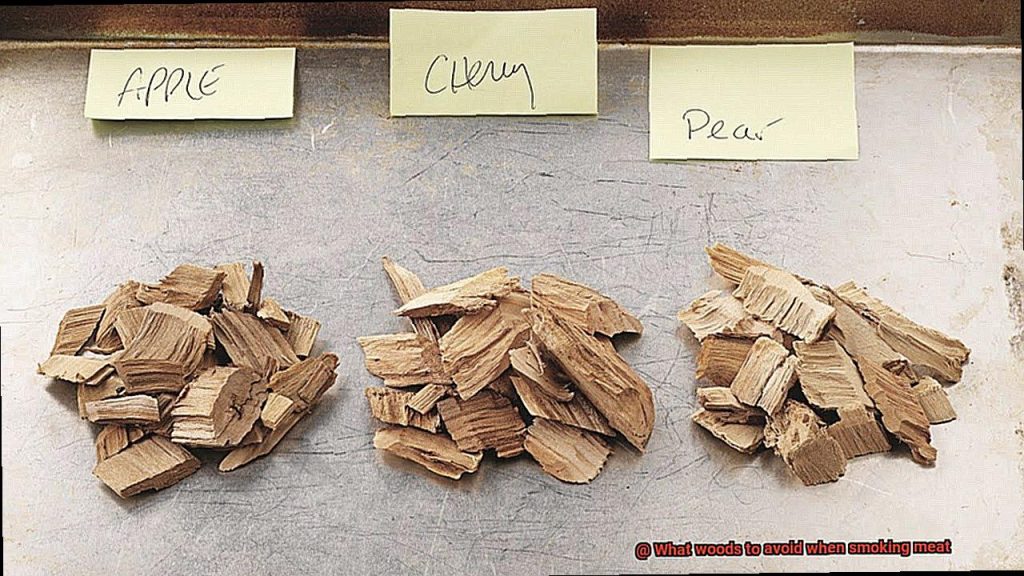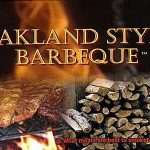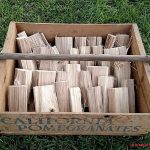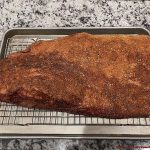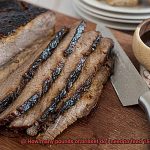Hey there, fellow smoke aficionados. If you’re like me, you know that smoking meat is more than just a cooking method – it’s an adventure for the taste buds. Picture this: the sizzle of juicy meat hitting the hot grates, wisps of fragrant smoke swirling around, and that unmistakable aroma that makes your mouth water in anticipation. But hold up. Before you get too carried away in your smoky dreams, let’s talk about something important: the woods to avoid when smoking meat.
Now, I’m no pitmaster extraordinaire (though I like to think I’m getting pretty close), but I’ve learned a thing or two along my smoky journey. And let me tell you, not all woods are created equal when it comes to infusing your meats with that perfect flavor. Trust me, making the wrong wood choice can leave your masterpiece tasting less like a culinary triumph and more like a backyard bonfire gone wrong. Yikes.
But fear not, my friends. Today, we’re going to dive headfirst into the world of woods and uncover those sneaky culprits you should steer clear of at all costs. We’ll be exploring everything from woods that can make your meat taste downright funky to those that might even pose health risks (and trust me, nobody wants that).
So grab yourself a cold beverage (I won’t judge if it’s a frosty brew) and get ready to become a wood-smoking expert. Together, we’ll navigate through toxic woods and overpowering flavors, ensuring that your next smoke session is nothing short of smoky perfection. Are you ready? Let’s do this.
Contents
What is Smoking Meat?
Smoking meat is more than just a cooking method; it’s an art form that elevates your grilled dishes to new heights. The slow, low-temperature cooking process infuses the meat with smoky flavors, resulting in tender, juicy, and flavorful masterpieces. But what truly sets smoked meats apart is the selection of the perfect wood, which adds a layer of complexity and depth to the final product. In this article, we will explore the smoking process and delve into the importance of choosing the right wood for your smoked meats.
The Smoking Process:
The essence of smoking meat lies in the slow-cooking technique at low temperatures over an extended period. This allows the meat to absorb the nuances of smoke, creating a meltingly tender texture and a symphony of flavors. The choice of wood plays a crucial role in achieving these delectable results.
Finding the Right Wood:
When it comes to selecting the ideal wood for smoking, you have a wide array of options available. Each type of wood imparts its own unique flavors and aromas, allowing you to tailor your smoking experience to your personal preferences and the specific cuts of meat you’re working with.
- Hickory: Known for its robust and smoky flavor, hickory is a classic choice for smoking meats like pork ribs and beef brisket. Its deep aroma perfectly complements these hearty cuts.
- Mesquite: For those seeking intense, earthy flavors, mesquite is the go-to wood. It pairs exceptionally well with bold meats like beef and game, but be cautious as its strong taste can overpower more delicate cuts.
- Applewood: If you prefer a slightly sweeter and milder smoke flavor, applewood is an excellent option. It beautifully enhances poultry dishes like chicken and turkey, bringing out their natural flavors.
- Cherry: Delicate and subtly sweet, cherry wood imparts a fruity smoke flavor that complements pork and poultry dishes. It adds a touch of elegance to your smoked meats, creating a truly memorable dining experience.
- Oak: With its versatile nature and well-balanced smoke flavor, oak is a popular choice for a wide range of meats. It provides a solid foundation that allows the natural flavors of the meat to shine, making it a staple in smoking recipes.
Avoiding Undesirable Woods:
While many woods are suitable for smoking, there are some that should be avoided due to potential health risks or overpowering flavors. Woods like cedar, cypress, pine, and eucalyptus contain toxins or produce harsh flavors that can ruin your smoked meats. Always opt for woods that are specifically labeled as safe for smoking to ensure both taste and safety.
Why is it Important to Avoid Certain Woods for Smoking Meat?
Well, listen up because the wood you choose can make or break the flavor of your mouthwatering creations. Not all woods are created equal when it comes to smoking meat, so it’s important to know which ones to avoid. Let’s dive into why steering clear of certain woods is crucial for both taste and safety.
First and foremost, let’s talk safety. Burning certain woods can release toxic substances that can be harmful if ingested through the meat. Woods like pine, cedar, and cypress contain high levels of resin, which not only produce an unpleasant flavor but can also leave a sticky residue on your meat, affecting its texture and appearance.
But flavor is equally important, right? Well, some woods can ruin your smoked meat with their overpowering tastes. Eucalyptus and sycamore are notorious for their bitter flavors when used for smoking. And here’s a pro tip: steer clear of woods from fruit-bearing trees with pits or seeds like cherry, apricot, or peach. These woods can release toxins when burned and taint the flavor of your meat.
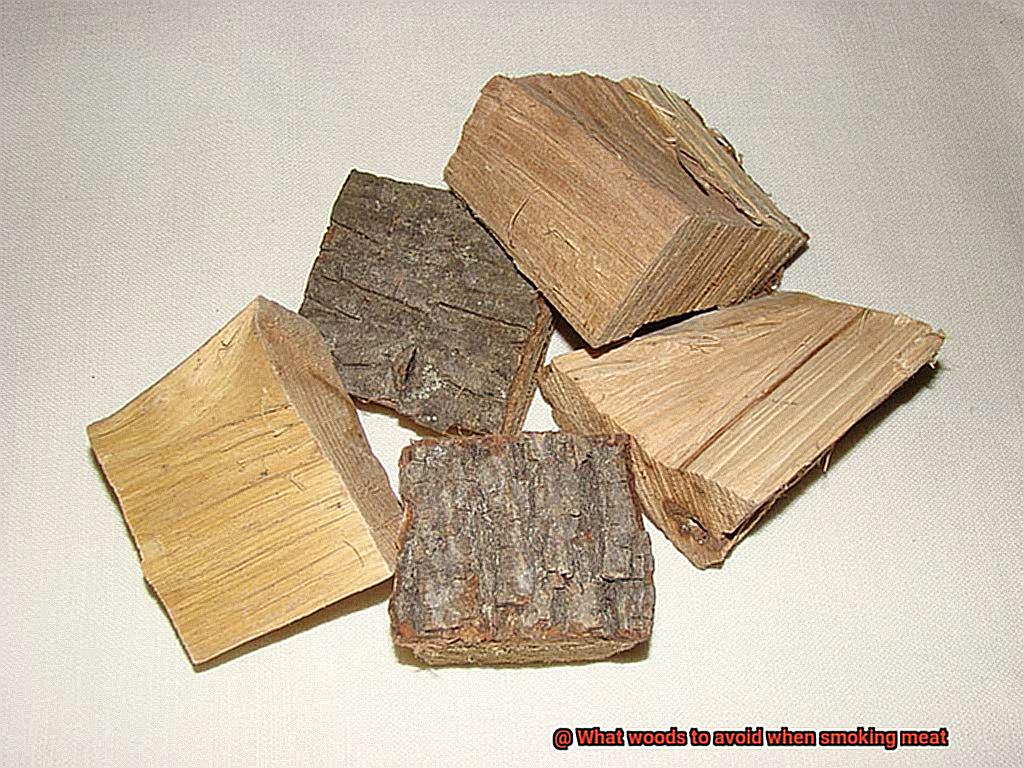
Now, let’s not forget about chemicals and pesticides. It’s crucial to avoid using woods that have been treated with these substances as they can contaminate your meat with harmful compounds that you definitely don’t want to ingest.
To ensure food safety and enhance the flavor of your smoked meats, it’s essential to do your research and choose the right types of woods. Hickory, mesquite, applewood, cherry, and oak are all excellent choices that will take your grilled creations to new heights.
Avoid Treated or Painted Wood
When it comes to grilling and smoking meat, the choice of wood is crucial for achieving the perfect balance of flavor and tenderness. However, there is one important rule to remember: avoid treated or painted wood at all costs. In this article, we will delve into the reasons why you should steer clear of these hazardous wood types and explore safe alternatives that will elevate your smoking experience.
The Health Hazards:
Treated wood, commonly used for outdoor projects such as decks and fences, harbors chemicals like arsenic and copper. When exposed to high temperatures, these toxic substances can release harmful fumes. Imagine those toxins seeping into your meat, posing serious health risks upon ingestion. Similarly, painted wood can contain lead or other harmful chemicals that compromise the safety of your food.
Choosing Safe Smoking Woods:
To ensure a healthy cooking process, opt for untreated, natural woods with no visible signs of treatment or paint. Fruitwoods like apple and cherry, hardwoods such as oak and hickory, or even nut shells like pecan and almond are excellent choices. These woods infuse a delightful aroma and flavor into your meat without any health concerns.
Exploring Alternatives:
If you are concerned about the type of wood you have or want to experiment with unique flavors, consider using wood chips, chunks, or pellets specifically designed for smoking. These products are carefully crafted to provide controlled smoke flavoring without any harmful chemicals.
Avoid Softwood
Today, we delve deep into the world of wood selection, specifically highlighting why softwood should be avoided when it comes to smoking meat. This crucial knowledge will save you from potential flavor disasters and guarantee that your smoked meats are nothing short of mouthwatering perfection.
The Resinous Dilemma:
Softwood, derived from coniferous trees like pine, fir, cedar, and spruce, may seem like a convenient choice due to its availability and affordability. However, let me enlighten you on the downsides. Softwood contains higher levels of resin and sap compared to hardwood. When burned, these release not-so-pleasant chemicals that can taint the flavor of your smoked meat. We certainly don’t want that.
Smoke Overload:
Picture this: you’ve patiently marinated your meat overnight and diligently prepped your smoker, only to find yourself overwhelmed by an excessive amount of smoke. Softwood tends to produce more smoke than hardwood, which can easily overpower the delicate flavors of your meat and leave an undesirable aftertaste. We want the wood to enhance, not overpower.
Temperature Troubles:
Maintaining a steady temperature in your smoker is crucial for achieving evenly cooked meat. However, softwood burns at a faster rate and lower temperature compared to hardwood. This makes it challenging to create that perfect cooking environment. Say goodbye to unevenly cooked or burnt meat.
Ash Attack:
Cleaning up after grilling is nobody’s favorite task. Unfortunately, softwood adds insult to injury by producing more ash compared to hardwood. Excessive ash can clog air vents, negatively affecting airflow and heat distribution in your smoker. Who needs that headache?
The Smoky Solution:
Now that we’ve established why softwood should be avoided, let’s explore some alternatives. Hardwoods like oak, hickory, apple, cherry, mesquite, or pecan are excellent choices for smoking meat. They provide a delightful aroma and flavor that enhances the taste of the smoked meat without overpowering it. Trust me, your taste buds will thank you.
Avoid Wood with High Oil Content
Intro:
Attention all grill masters and meat aficionados. If you want to achieve that mouth-watering, smoky flavor when smoking meat, pay close attention. Today, we’re delving into the world of wood selection, specifically why it’s crucial to avoid using wood with high oil content. Your taste buds are about to embark on a delectable journey.
Cedar – The Fish Lover’s Nemesis:
While cedar is a popular choice for grilling fish, it should never be used for smoking meat. Its high oil content can unleash a domineering flavor that easily overpowers the succulent taste of your juicy steak or tender ribs.
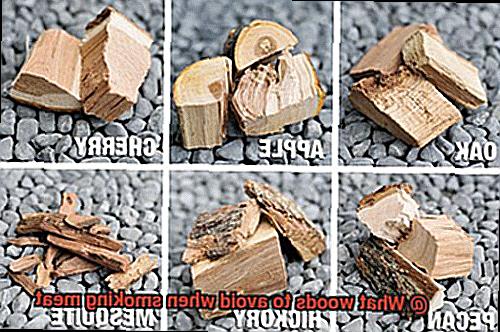
Pine – A Bitter Resinous Experience:
When it comes to smoking meat, pine wood is a major no-no. Its excessive oil content leads to a bitter and resinous taste that can shatter your barbecue dreams. Moreover, the overpowering aroma of pine may not be the fragrant ambiance you desire while grilling.
Eucalyptus – A Flavor Clash:
Although eucalyptus wood entices with its unique aroma, it’s best to steer clear when smoking meat. Eucalyptus oil possesses a distinct flavor that may clash with the delicate taste of your meat. Let’s not forget that certain eucalyptus species harbor toxins that are definitely not on the menu.
Olive Wood – A Bitter Aftertaste:
While olive wood adds delightful nuances to grilled vegetables and seafood, it leaves an unwelcome bitter aftertaste when used for smoking meat. Its high oil content lingers unpleasantly on the palate, tarnishing the enjoyment of sinking your teeth into a perfectly smoked brisket.
Say No to Chemicals:
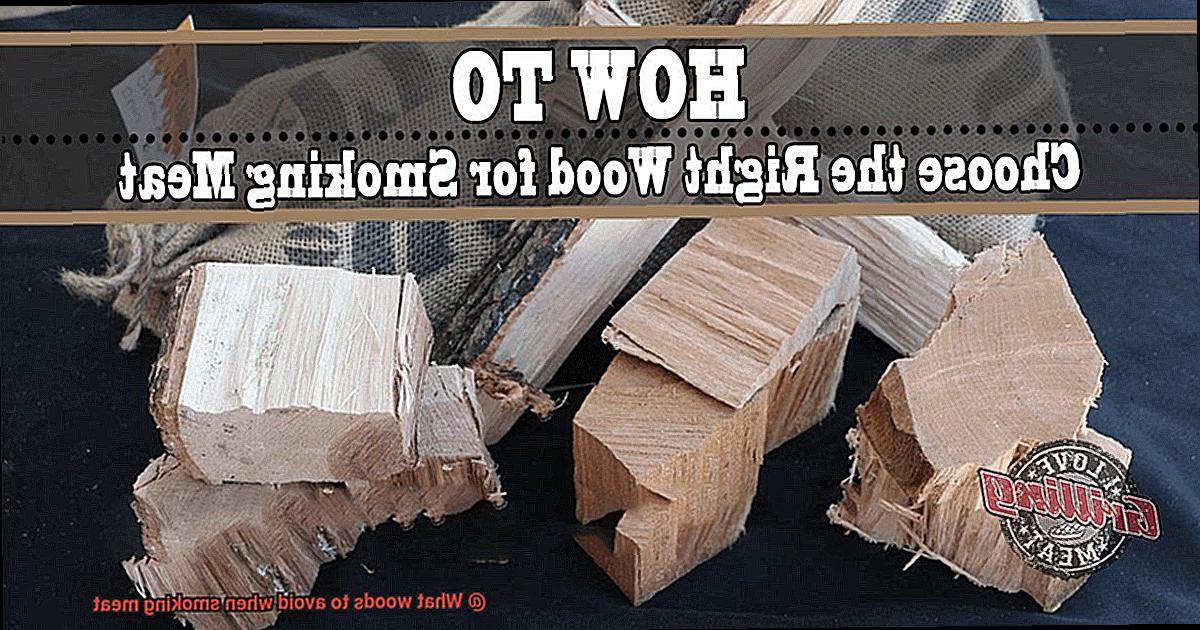
Last but not least, always avoid wood treated with chemicals or pesticides. These substances contaminate your food and pose health risks when consumed. Stick to natural and untreated wood to ensure a safe and tantalizing barbecue experience.
Avoid Chemically Treated or Contaminated Wood
Imagine the perfect backyard barbecue scene: the sun shining, your grill sizzling, and the mouth-watering scent of smoked meat filling the air. As a grilling enthusiast, you know that selecting the right wood is essential for achieving that perfect smoky flavor. However, using chemically treated or contaminated wood can pose serious health risks. In this comprehensive guide, we will explore the dangers of such wood and provide you with actionable tips to avoid them. By following these guidelines, you can ensure that your smoked meats are not only delicious but also safe for consumption.
The Dangers of Chemical Treatments:
Chemical treatments like pressure-treated wood may be suitable for outdoor projects, but they have no place near your grill. These woods contain toxic substances such as arsenic, chromium, and copper. When heated during smoking, these chemicals can leach into your meat, posing a significant health risk.
Contamination Concerns:
Contaminated wood that has been exposed to pesticides, herbicides, or other harmful substances is another red flag. These chemicals can contaminate the smoke produced during smoking and transfer onto your meat. Avoid unwanted chemicals on your plate by choosing your wood wisely.
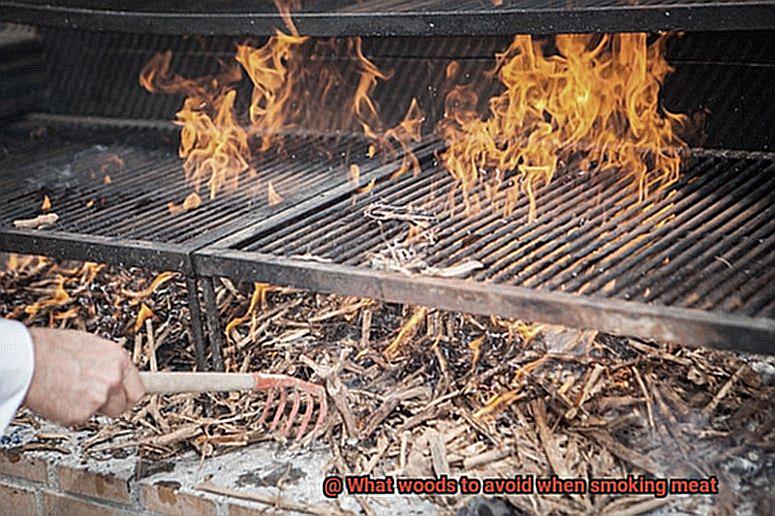
Safer Wood Alternatives:
To ensure the safety of your smoked meats, stick to untreated, natural hardwoods. Popular choices include oak, hickory, apple, cherry, and maple. Not only do these woods offer enticing flavors, but they are also free from chemical treatments and safe for food consumption.
Trustworthy Sources:
Never compromise on safety when it comes to choosing your smoking wood. Source your wood from reputable suppliers who provide assurances about their products’ safety. Look for labels or certifications indicating that the wood is untreated or specifically intended for food smoking purposes.
Say No to Unknown Wood Origins:
Avoid the use of scrap or reclaimed wood with unknown sources or potential chemical treatments. Instead, opt for commercially available smoking woods that are specifically marketed for culinary use. Don’t take chances when it comes to your health and the taste of your creations.
Avoid Green or Unseasoned Wood
Smoking meat is an art form, and the right wood is the brush that paints the perfect smoky flavor. Unfortunately, many backyard grillers make a common mistake by using green or unseasoned wood. Green wood refers to wood that hasn’t been properly dried or aged before being used for smoking. In this article, we’ll explore why it’s essential to use properly seasoned wood when smoking meat and how it can impact the taste and safety of your barbecue.
The first reason to avoid green or unseasoned wood is its high moisture content. When wood isn’t dried correctly, it produces an excessive amount of smoke. Imagine taking a bite of your carefully prepared smoked brisket, only to be overwhelmed by an overpowering smoky flavor. Not quite what you had in mind, right? Excess smoke from green wood can also cause the meat to become bitter and mask its natural flavors.
Furthermore, the moisture in green wood creates a cooler burning fire, leading to inconsistent cooking temperatures and longer cooking times. This can be problematic as it increases the risk of bacteria growth and foodborne illnesses. As grillers, we want our barbecue not only to be delicious but also safe for consumption.
Another issue with green wood is the production of creosote. Creosote is a thick, sticky substance that accumulates inside your smoker and on the meat. It not only imparts a bitter taste but can also be harmful if ingested in large amounts. To avoid these issues, it’s recommended to use properly seasoned or dry wood for smoking meat.
Seasoned wood refers to wood that has been properly dried for a specific period, allowing the moisture content to reduce significantly. Dry wood burns more efficiently and produces a clean and consistent smoke, enhancing the flavors of the meat without overpowering them. Seasoned wood also generates a higher cooking temperature, which helps to cook the meat more evenly and reduces cooking time.
So, how can you ensure that you’re using properly seasoned wood for smoking meat? One option is to purchase pre-seasoned wood from reputable suppliers. These suppliers have already taken the necessary steps to dry the wood properly, ensuring that it’s ready to be used for smoking. Another option is to dry freshly cut wood yourself. To do this, you’ll need to store the wood in a dry and well-ventilated area for at least six months to a year before using it for smoking meat.
e_ihPPARY9A” >
Conclusion
In conclusion, the wood you choose for smoking meat can either elevate your culinary creation or spell disaster. With a plethora of options available, it’s crucial to steer clear of certain woods that can sabotage the flavor and even pose health risks.
First and foremost, avoid woods with high oil content like cedar, pine, eucalyptus, and olive wood. These troublemakers can unleash overpowering or bitter flavors that clash with the natural taste of your meat. Don’t let these culprits ruin your masterpiece.
Additionally, stay away from chemically treated or contaminated wood. These sneaky saboteurs release harmful toxins into your food, compromising both taste and safety. Keep them at bay to safeguard your dining experience.
Another culprit to avoid is green or unseasoned wood. This troublemaker comes with a high moisture content that leads to excessive smoke production and an unpleasantly bitter taste. Say no to inconsistent cooking temperatures and the risk of bacteria growth by bidding farewell to green wood.
To guarantee a safe and tantalizing smoking experience, opt for hardwoods such as hickory, mesquite, applewood, cherrywood, and oak. These heroes offer a delightful range of flavors that enhance the taste of your meat without overpowering it.
Remember to source your wood from reputable suppliers who provide untreated and properly seasoned options. By making informed choices about the type of wood you use for smoking meat, you’ll be well on your way to achieving smoky perfection every time you ignite the grill.

